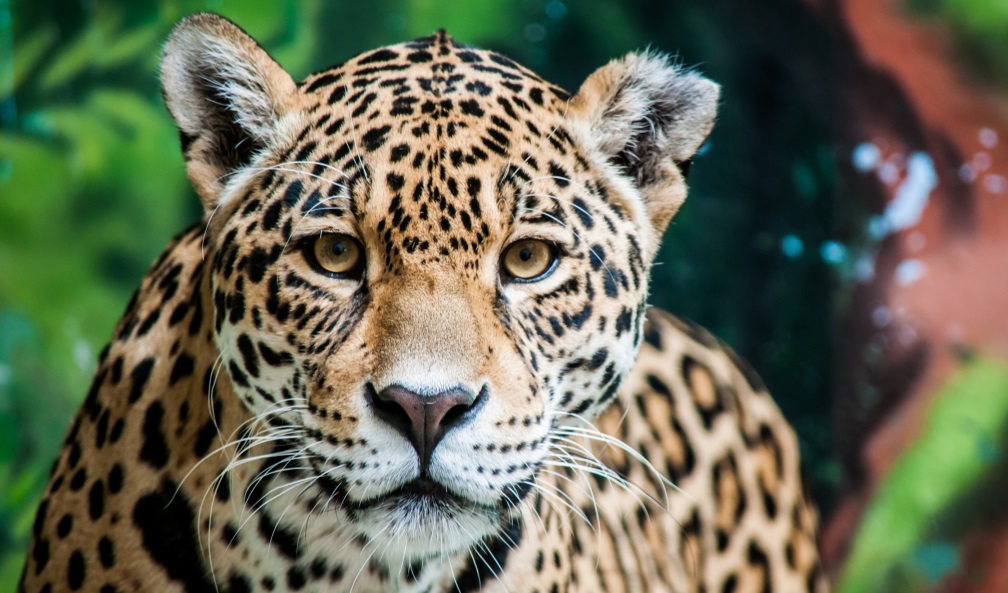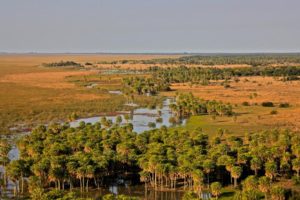The jaguar is the largest and one of the most iconic felines in the Americas, but hunting, habitat loss, and other threats left the species in danger of extinction in Argentina.
Having lost 95 per cent of their original distribution, it is currently estimated that only some 200 individuals remain in Argentina, distributed mainly in isolated patches of the jungles of Misiones Province and in the mountain slope forests of Salta and Jujuy provinces.
Tompkin Conservation’s pioneering Jaguar Reintroduction Program was introduced in 2011. The team in Argentina, which includes scientists, veterinarians, community stakeholders and policymakers, has been collaborating with the goal of breeding a generation of jaguars that could be released into their natural habitat and survive independently in the wild.
Five mature jaguars that came from zoos and rescue centres around South America. They are not candidates for release themselves, but can be bred. The Jaguar Reintroduction Program at Iberá has incredible potential to support the return of this ecologically important and culturally iconic species, with access to more than 700,000 hectares of habitat teeming with caimans, capybaras and other food sources.
Now, in December 2018, that jaguar restoration effort—previously reported on here in REVITALIZATION—took a major step forward when the Congress of Argentina passed legislation approving the creation of the nearly 160,000-hectare (400,000 acres) Iberá National Park.
Douglas and Kristine Tompkins, successful entrepreneurs from the United States, purchased the land through two foundations, Conservation Land Trust and Flora and Fauna Argentina, which ultimately donated the property to the public to become a national park.
“Today is a day to celebrate,” said Kristine Tompkins, president of Tompkins Conservation on the day the legislation was approved. “For the wildlife at home here, for the people of Argentina, and for future generations who will experience this amazing landscape’s beauty and biodiversity, the new park’s designation is a great victory.”
The new national park abuts a much larger (553,000 hectares) protected area, the Iberá Provincial Park, creating a huge contiguous swath of parkland centred on one of the largest freshwater wetlands in South America. The conjoined Iberá Park is the largest nature park in Argentina.
“This is a fantastic achievement by Kristine Tompkins, a UN Environment Patron for Protected Areas, and her late husband,” says UN Environment’s Wild For Life campaign coordinator Lisa Rolls. “The campaign is currently exploring a strategic shift in the direction of `rewild for life’,” she adds.
It is estimated that in 10 years, Iberá Park will receive more than 100,000 visitors a year, promoting economic prosperity in the local communities surrounding the park, which have in recent years seen growth in ecotourism.
A historic day for the Tompkins Conservation’s rewilding efforts was 6 June 2018, when two new jaguar cubs were born in Iberá Park. They were the first jaguars born in this region in decades.
The park not only has the first jaguar cubs, but is home to recovered populations of species that had been lost, including the giant anteater, Pampas deer, tapir, collared peccary and the red-and-green macaw.
The world’s wildlife has collapsed in the past 100 years as human population and economic activity, especially commercial farming, has mushroomed. But now there is a growing realization that the survival of humans on the planet requires well-managed protected areas where diverse flora and fauna can flourish. Nature provides an array of ecosystem services, which in many parts of the world are being rapidly degraded by human exploitation of natural habitat.
“Rewilding” is the buzzword among conservationists these days, even though it was coined almost three decades ago by the famed environmental leader, Dave Foreman. It means helping nature heal by restoring the missing species, biodiversity, and natural processes to areas affected by human activity.
It’s part of the conservation-to-restoration transition that REVITALIZATION publisher Storm Cunningham documented in his 2002 book, The Restoration Economy. Now that there is literally not one square mile of truly pristine land or water on the planet, the time has long since passed for relying on merely slowing down the rate of destruction: it’s time to undo centuries of previous destruction via restorative developmmnt.
Jaguar photo via Adobe Stock.
The unmodified version of this article originally appeared on the UNEP website.
Reprinted here with permission.


